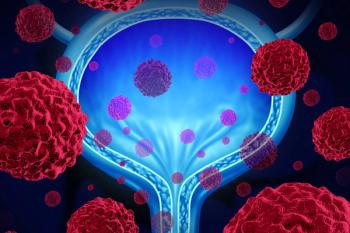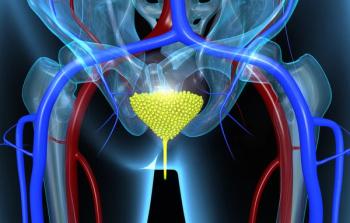
Mutation Pattern May Help Predict Treatment Response in Urothelial Carcinoma of the Bladder
A small genomic study of patients with chemoradiation-treated urothelial carcinoma of the bladder found similar mutation patterns between primary and recurrent tumors.
A small genomic study of patients with chemoradiation-treated urothelial carcinoma of the bladder found similar mutation patterns between primary and recurrent tumors, and that deleterious DNA damage response gene alterations may be associated with improved outcomes.
Transurethral resection of bladder tumors and chemoradiation offers an effective alternative to chemotherapy along with radical cystectomy in this malignancy, but many patients have incomplete responses requiring immediate cystectomy.
“Furthermore, theoretical concerns about ‘field cancerization’ in urothelial carcinoma of the bladder would suggest an inevitable local relapse after bladder preservation,” wrote study authors led by Neil B. Desai, MD, of the University of Texas Southwestern in Dallas. “Improved understanding of the biologic basis for chemoradiation response would help address its current poor acceptance.”
The new study included 48 patients with non-metastatic, high-grade disease; 8 patients had a matched recurrent tumor. Tumors were analyzed using next-generation sequencing, using an assay enriched for cancer-related genes and “canonical” DNA damage response (DDR) genes. The results were
The pattern of genomic alterations in general was similar to previously published reports of urothelial carcinoma patients. For example, several chromatin-modifying genes were frequently mutated, including ARID1A and KMT2D. A median of 92% of mutations were shared across pre- and post-treatment bladder tumor samples; in three patients who had a paired bladder tumor and distant metastasis, 33% of mutations were shared.
A total of 26 patients (54%) harbored DDR gene alterations; the researchers focused on alterations likely to be deleterious to function, which occurred in 12 patients (25%). The most common was an alteration in ERCC2 (6 patients).
On a univariate analysis, the presence of a DDR deleterious alteration was associated with a trend toward reduced incidence of bladder recurrence; the 2-year cumulative recurrence incidence was 28% when an alteration was present and 63% without an alteration (P = .071). A similar result was seen for any recurrence (36% vs 63%; P = .067).
A multivariate model confirmed this, again with a non-significant trend toward reduced recurrence risk with a hazard ratio (HR) of 0.32 (95% CI, 0.10–1.10; P = .070). The HR for metastatic recurrence with DDR alterations was 0.35 (95% CI, 0.10–1.20; P = .094), and for any recurrence it was 0.37 (95% CI, 0.13–1.08; P = .070).
ERCC2 alterations in particular seemed associated with lower risk of recurrence, with only one in six patients experiencing a recurrence. The size of the cohort did not allow for multivariate modeling of that specific mutation, however.
“Although these data require validation, they provide insight into potential predictors of therapeutic response and the biology of recurrence failures in urothelial carcinoma managed with chemoradiation,” the authors concluded.
Newsletter
Stay up to date on recent advances in the multidisciplinary approach to cancer.


















































































